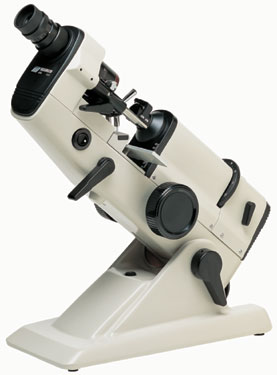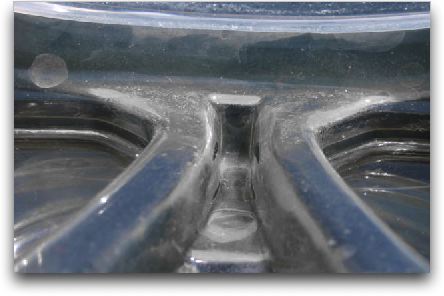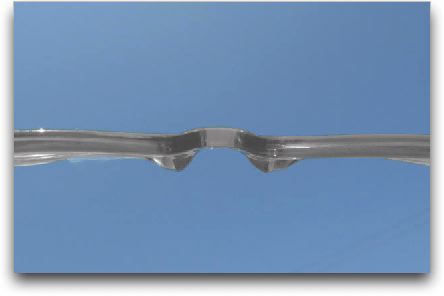Oreocookie:
As I said before RE a strong + diopter Rx:
If indeed your left eye (your "good" one) has a combined Rx of +4 diopter on one axis (+2.0 SPH & +2.0 CYL), and your right eye has a combined +5.0 diopter, then high index material would slightly reduce the geometry problem I mention. But you'll still have significant loss in field-of-view and off-center blurring. Please confirm your Rx has ALL "+" values (not "-" values).
You could DIY your own "carrier" by cutting off the temple pieces of some robust plastic-frame eyeglasses. The trick is finding a design that fits inside the mask well, without cramming into your nose. Yes, this is an inelegant solution, and you'll have to judiciously treat three surfaces with anti-fog gel. But the acuity and field-of-view advantage with the "carrier" is far superior to custom-made bonded-on or solid-block lenses. And $100 less expensive (for mask + carrier + Rx lenses) vs. high-index plano-convex lenses that are single-vision (i.e. not bifocal) installed in a mask.
All that said, your field-of-view and acuity will be best with contact-lenses. BUT - you must be careful to follow all hygiene protocols. The least expensive torics, daily-disposable "Ciba Focus Dailies Toric," are less than $1.00 per lens.
Contact lens divers on vacation often get lazy and keep their contacts in many many hours after diving. Some people sleep in extended wear contacts, as they do at home. No!!! Not on a dive vacation!!! That's when itchy / dry eyes become a problem, even with the new materials -- REMOVE SHORTLY AFTER DIVING!!
Since you're new to diving, if you opt for contact-lenses, make sure you take the time to get used to wearing contacts before going on vacation. The task loading of learning to wear contacts + learning to dive is not safe. If you choose to go with contacts, because you're farsighted, BE SURE to carry a small magnifying mirror (otherwise you'll never be able to focus to insert the lenses). Also, start to desensitize your blink-reflex, so you'll be popping in contacts like a pro, by getting comfortable with putting in eye drops without wincing.
BTW -- how old are you? Does your Rx have an "add" number (for bifocals)? I hope I'm not insulting you -- just wanting to give you a fully-informed recommendation.
As I said before RE a strong + diopter Rx:
I believe it is unethical to make an Rx mask for a high POSITIVE diopter Rx using the "conventional" approach, because such a plano-convex lens greatly reduces your field-of-view [much worse than a non-Rx mask] while simultaneously causing fuzzy vision for off-axis views. Instead, we recommend a lens "carrier" to preserve more field-of-view.
If indeed your left eye (your "good" one) has a combined Rx of +4 diopter on one axis (+2.0 SPH & +2.0 CYL), and your right eye has a combined +5.0 diopter, then high index material would slightly reduce the geometry problem I mention. But you'll still have significant loss in field-of-view and off-center blurring. Please confirm your Rx has ALL "+" values (not "-" values).
You could DIY your own "carrier" by cutting off the temple pieces of some robust plastic-frame eyeglasses. The trick is finding a design that fits inside the mask well, without cramming into your nose. Yes, this is an inelegant solution, and you'll have to judiciously treat three surfaces with anti-fog gel. But the acuity and field-of-view advantage with the "carrier" is far superior to custom-made bonded-on or solid-block lenses. And $100 less expensive (for mask + carrier + Rx lenses) vs. high-index plano-convex lenses that are single-vision (i.e. not bifocal) installed in a mask.
All that said, your field-of-view and acuity will be best with contact-lenses. BUT - you must be careful to follow all hygiene protocols. The least expensive torics, daily-disposable "Ciba Focus Dailies Toric," are less than $1.00 per lens.
Contact lens divers on vacation often get lazy and keep their contacts in many many hours after diving. Some people sleep in extended wear contacts, as they do at home. No!!! Not on a dive vacation!!! That's when itchy / dry eyes become a problem, even with the new materials -- REMOVE SHORTLY AFTER DIVING!!
Since you're new to diving, if you opt for contact-lenses, make sure you take the time to get used to wearing contacts before going on vacation. The task loading of learning to wear contacts + learning to dive is not safe. If you choose to go with contacts, because you're farsighted, BE SURE to carry a small magnifying mirror (otherwise you'll never be able to focus to insert the lenses). Also, start to desensitize your blink-reflex, so you'll be popping in contacts like a pro, by getting comfortable with putting in eye drops without wincing.
BTW -- how old are you? Does your Rx have an "add" number (for bifocals)? I hope I'm not insulting you -- just wanting to give you a fully-informed recommendation.







